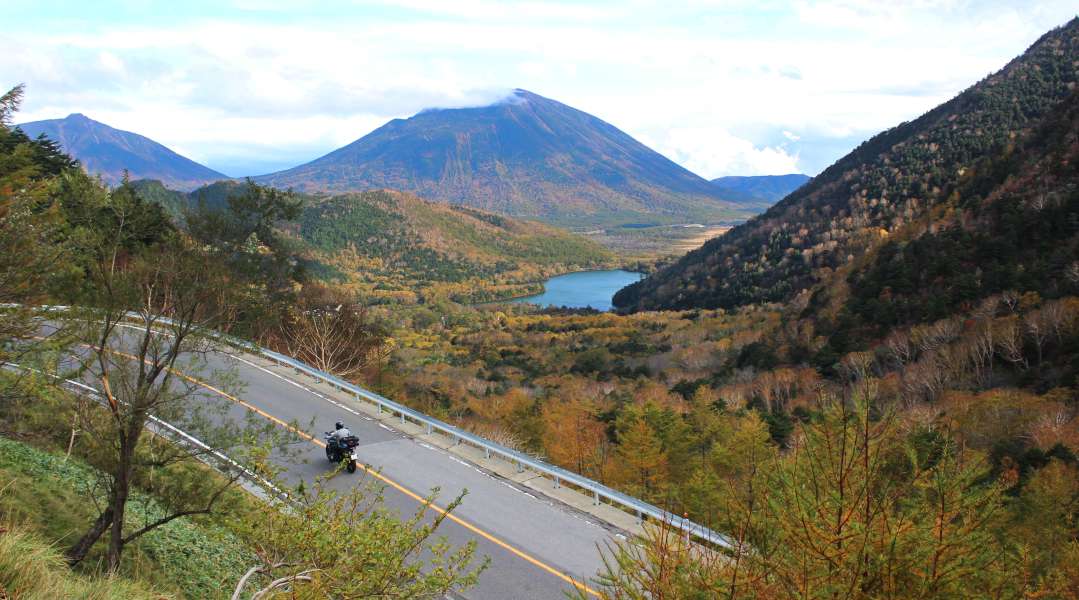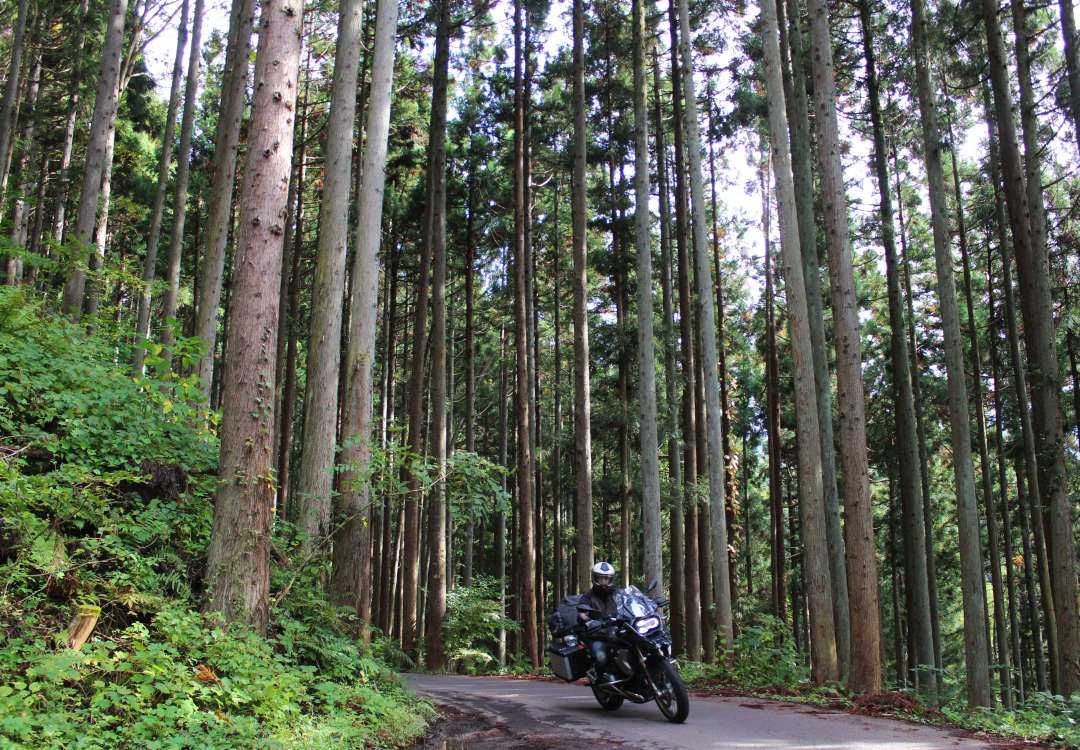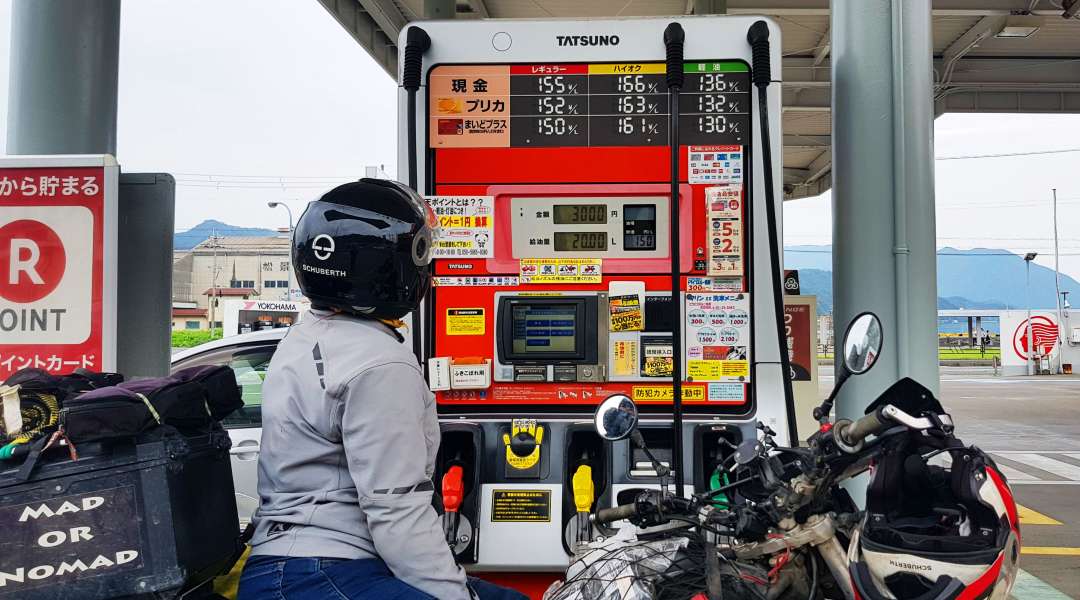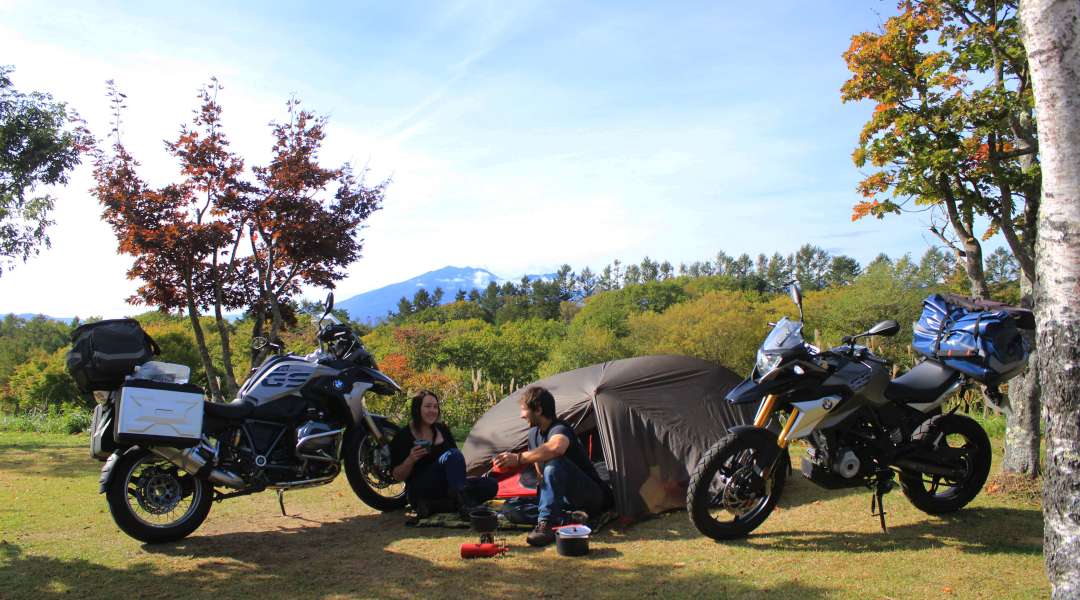
Welcome to the Motorcycle Travel Guide to Japan. The 4th largest island country in the world, Japan offers an incredible variety of natural and urban sceneries to enjoy on a roadtrip, from snowy Hokkaido and subtropical Okinawa to the concrete jungles of Tokyo and Osaka. Here’s everything you need to know about travelling overland with a bike in Japan!
Is Japan good for motorcycle travel?
Travelling is extremely subjective and completely down to personal preference. However, if you’re wondering what our viewpoint is on motorcycle travel in Japan, well… the answer is no, but that’s not a flat-out no…
Japan is expensive to get your vehicle into and out of. It’s also expensive travelling around and very slow going because of low speed limits and heavy traffic anywhere near cities. There’s no, or very little, adventurous off-roading, a billion rules, it’s expensive to fix your vehicle if anything goes wrong and the time it takes to get places can be frustrating.
That’s not supposed to put you off though. Japan is an incredible and amazing country and you must visit. Whether you choose to rent a vehicle, use public transport or take your personal vehicle in all depends on what you want to do and how long you’ve got.
Let’s say you’ve got one month and want to see a few of the main attractions. It’d be easier to save the hassle of importing by renting or buying a bike there or using public transport. It’s very time consuming using Japanese roads (unless you opt for the incredibly expensive toll roads). You’ll spend far more time travelling than planned, reducing the amount of time sightseeing.
If you have three to six months and want to see everything, then of course, your own vehicle would be better as you’ll offset the amount rentals and public transport cost.

Our motorcycling experience in Japan
We spent five months and 5,000 miles exploring the country on our own motorcycles. We wouldn’t have enjoyed it with public transport because we crave the freedom our own transport offers and also because we wanted to see so much.
What paperwork do I need to take my vehicle into Japan?
We have a dedicated guide on what paperwork you need for Japan here.
If you’re travelling in your own vehicle you will need a carnet de passage or a temporary import. You will no doubt find a lot of information on the carnet for Japan, but you can enter without one (using a temporary import). The caveat is that you must enter and exit Japan using a RORO ferry (roll on, roll off) (click here for our guide on how to get from Russia to Japan via ferry). To be clear, that means you can’t enter via ferry, get a temporary import and then ship your vehicle out in a container. It must be ferried out, and not necessarily to the same location it was shipped in. You can ferry in from Russia and ferry out to South Korea.
What visas do I need for Japan?
The visa situation in Japan makes motorcycle travel easy. UK citizens can enter Japan for up to 90 days without a visa. You’ll get a 90-day stamp in your passport when you enter.
You can extend your visa while you’re in Japan for a further 90 days before it expires. You can do this at an Immigration Bureau (入国管理局, Nyukoku Kanrikyoku). These bureaus are dotted all over Japan in major cities and just need a quick Google to find. Once you arrive, you will be directed by the staff on what paperwork to fill out.
We applied and received an additional 3-month stay; however, it was a little touch-and-go. The staff said we could not receive a further stay purely to extend our sightseeing. It took a little wrangling but they allowed it in the end. So, if you are planning on extending, plan carefully (you can not extend too far in advance either).
You can leave Japan and leave your vehicle in the country. You won’t be asked anything about your vehicle on leaving or when you re-enter.
How do I get my motorbike or vehicle into Japan?
To get your own vehicle into Japan you can either ship it in via cargo ship, fly it in or use a ferry.
If you’re shipping or flying your vehicle in, then the research will need to be done from wherever your crating and sending from. Your shipping company will advise on pricing and fees at the arrival destination.
If you are using a ferry, then you will either be: coming from Vladivostok, Russia using DBS ferries (here’s How to Get the Ferry from Russia to Japan); or coming in from South Korea using Kampu Ferries (How to Get the Ferry From South Korea to Japan) or Camellia Line Ferries.
How to rent a motorcycle in Japan
Japan Bike Rentals rent out a selection of motorbikes including a BMW F800GS or R model, Yamaha MT-09 Tracer or 07 or 03 models. Prices start at about £70 a day, including fully comprehensive insurance and tax. You can also opt for a guided tour if you don’t fancy going it alone. Visit japanbikerentals.com for more info. We have no affiliation with this company and we haven’t used their services, we just know they exist!

Is Japan as expensive as everyone says it is?
Japan is expensive compared to most motorcycle travel destinations like South East Asia, Central Asia and South America. You’re paying first-world country prices. A hefty chunk of your budget will be spent on entering and exiting the country (regardless if you’re using RORO or shipping/flying), Japanese insurance and the big one – accommodation. So, it is expensive but that’s relative to where you’ve been and what you’ve done prior. Read on to find out how to save money and make Japan more affordable for motorcycle travel.
Riding Roads in Japan
Japan has two types of roads: the free national road and the jaw droppingly expensive toll road. Toll roads will eat away at your budget. If you use a debit or credit card to pay, then they charge the full amount twice and reimburse one payment later. The national roads can be painstakingly slow, especially anywhere near a city. Plot your routes away from major cities, avoid toll roads and you’ll be fine. Thankfully, just like the U.K., Japan also drives on the left! As for an International Driving Permit (IDP) in order to legally drive in Japan, this can be obtained easily at certain Post Office branches for a mere £5.50 upon presentation of your full UK Driver's Licence. Visit Post Office for more information.

Accommodation and camping
Hotels are a big expense in Japan. Turning up at a hotel without a reservation can sometimes appear rude to Japanese and you’d be surprised how full hotels get, so booking online in advance is worth it. Booking.com is your best bet for Japan. There are other similar Japanese websites, but they’re tricky to use and complicated.
We used AirBnB for longer stays as it proves a lot cheaper than hotels. We used an AirBnB for a four-week stay in Osaka and a three-week stay in Kyoto, had the entire apartment to ourselves and saved a mini fortune.
Love Hotels are also a good option. Before you spit out your breakfast in disgust, let us explain… Love Hotels in Japan are not the seedy and gross hotels that spring to mind. They’re immaculate, well looked after and socially acceptable establishments… that can be booked out for the hour. They’re dotted all over the country and are easy to spot. The prices are listed outside and you can book the room for 8 hours for a much cheaper rate than most hotels. The love hotel room is more often than not, twice the size of an average hotel room, packed with amenities, easy to check in and out and cheaper. Check them out!
For a rough idea, expect to pay £15 for a dorm room hostels, £35 for a hotel room, £20 for a Love Hotel and £7 for a campsite.
Camping for motorcycle travellers in Japan
There are three types of campsite in Japan: privately owned campsites, official free campsites or wild camping.
The privately owned campsites can prove quite expensive. They are lovely though, usually very well looked after and super clean.
The official free campsites are dotted all over the country and excellent. They don’t usually have showers but do have working toilets. They’re an excellent way to save money. We recommend the fantastic Facebook group Free camping and hotsprings in Japan. Download their map to your Google maps and you’ll see hundreds of great campsites spread across the country.
Wild camping is relatively easy in Japan. As long as you tuck yourself out of the way and disappear in the morning you won’t have a problem.
Top tips
- Very little English is spoken outside of major cities. Prepare to get good at Japanese charades
- However long you think it’ll take to get somewhere, double it
- Cash is king in Japan
- 7-Eleven is your best friend. They’re a huge franchise in Japan, use them for free wi-fi, to cool down, for their clean high-tech toilets and tasty and cheap food. Also, we only ever withdraw money from ATMs in 7-Elevens as there’s no charge. Plenty of other 'Conbini' chains can be found across Japan, including Lawson, FamilyMart, Circle K Sunkus, Ministop and Daily Yamazaki, to name but a few.
- Try to avoid visiting during major national holidays like Golden Week (the week from the 29th of April through early May). Cheery Blossom season is also pretty mad.
For links to our in-depth guides, info on roads, visas, accommodation, paperwork, tips, tricks and loads more, visit Mad or Nomad.
To stay up to date with all the latest happenings in Japan follow us on Facebook or Twitter.

















































